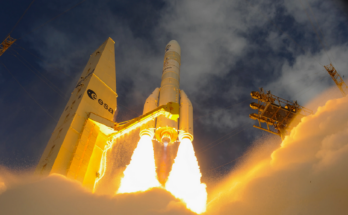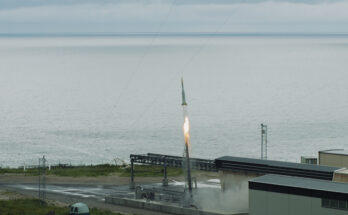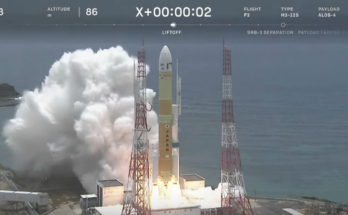By Bill Ostrove, Space Systems Analyst, Forecast International.
A Zenit 2SB launch vehicle lifted off from the Baikonur Cosmodrome in Kazakhstan on December 12 carrying the Elektro-L2, a geosynchronous meteorological satellite, into orbit. The Zenit 2SB is also referred to as the Zenit 3SLBF by some sources.
The satellite was the second of a planned fleet of three spacecraft that will modernize Russia’s weather monitoring and forecasting abilities. The first satellite was lifted into space in 2011, also aboard a Zenit rocket. Elektro-L satellites are based on NPO Lavochkin’s Navigator bus and provide a view of the entire “disk” of Earth thanks to their position in geostationary orbit. The satellites will improve weather forecasting, ocean analysis, and space weather monitoring. Each satellite has a launch mass of about 1,750 kilograms and is expected to remain in orbit for 10 years.
The satellite is important to Russian weather forecasting capabilities, but the launch was also significant for another reason. It was likely the last launch for the venerable Zenit rocket. Zenit launch vehicles have lifted off 83 times since they were designed in the 1970s (including the December 12 flight). However, the combination of tension between Russia and Ukraine and the development of new technology has led to the end of Zenit production.
The Zenit was produced by the Yuzhnoye design bureau in Ukraine. This was not an issue when Ukraine and Russia were both part of the USSR. Even after the breakup of the Soviet Union, cooperation between the Ukrainian and Russian space industries continued. Zenit rockets launched 68 times between 1990 and 2013, peaking in 2008 with six launches.
However, with tension rising between Russia and Ukraine, Russia decided to stop using the launch vehicle. Roscosmos announced in February of this year that it will no longer use Zenit rockets to carry payloads into orbit. Instead, Moscow intends to rely on entirely Russian-built launch vehicles.
 There are other issues that brought about the end of the Zenit’s useful life. As the chart demonstrates, Zenit launches have been declining since the peak in 2008. A number of reasons caused this decline. The Zenit production chain suffered from inadequate access to capital, production inefficiencies, and price erosion in the launch services market. These problems forced the commercial operator of the Zenit, Sea Launch, to seek bankruptcy protection in June 2009. The company did not emerge from bankruptcy protection until October 2010, and no Zenit launch vehicles lifted off in 2010. While launches resumed in 2011, Sea Launch was never able to recover.
There are other issues that brought about the end of the Zenit’s useful life. As the chart demonstrates, Zenit launches have been declining since the peak in 2008. A number of reasons caused this decline. The Zenit production chain suffered from inadequate access to capital, production inefficiencies, and price erosion in the launch services market. These problems forced the commercial operator of the Zenit, Sea Launch, to seek bankruptcy protection in June 2009. The company did not emerge from bankruptcy protection until October 2010, and no Zenit launch vehicles lifted off in 2010. While launches resumed in 2011, Sea Launch was never able to recover.
In addition, Russia is developing a new launch vehicle family. The Angara family will eventually replace a number of launch vehicles, including the Zenit. Angara launch vehicles will be produced in Russia and will include innovations, such as the use of a less poisonous rocket fuel. While financial trouble at Sea Launch reduced commercial demand for the Zenit, Russia’s development of the Angara reduced military and government demand.
As the chart shows, Zenit launches steadily declined between 2011 and 2013 – before tension between Russia and Ukraine. That tension only added to already declining demand. Now, there is no demand for the Zenit. Production has closed, and launch of the one Zenit currently in storage is not likely.
A military history enthusiast, Richard began at Forecast International as editor of the World Weapons Weekly newsletter. As the Internet grew in importance as a research tool, he helped design the company's Forecast Intelligence Center and currently coordinates the EMarket Alert newsletters for clients. Richard also manages social media efforts, including two new blogs: Defense & Security Monitor, covering defense systems and international issues, and Flight Plan, which focuses on commercial aviation and space systems. For over 30 years, Richard has authored the Defense & Aerospace Companies, Volume I (North America) and Volume II (International) services. The two books provide detailed data on major aerospace and defense contractors. He also edits the International Contractors service, a database that tracks all the contractors involved in the programs covered in the FI library. More recently he was appointed Manager, Information Services Group (ISG), a new unit that encompasses developing outbound content for both Forecast International and Military Periscope.




